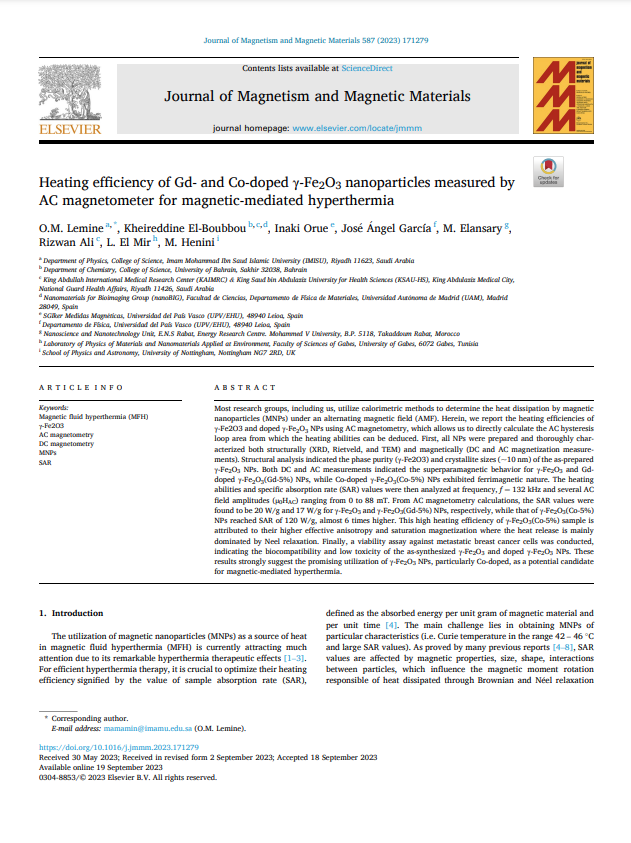Document
Identifier
https://digitalrepository.uob.edu.bh/id/1fd334db-87ee-4cdb-b94e-291970994f8b
Heating efficiency of Gd- and Co-doped γ-Fe2O3 nanoparticles measured by AC magnetometer for magnetic-mediated hyperthermia
Linked Agent
El-Boubbou, K, Author
Orue, I, Author
Ángel García, J, Author
Elansary, M, Author
Ali, R, Author
El Mir, L, Author
Henini, M, Author
Country of Publication
Kingdom of Bahrain
Place Published
Sakhir, Bahrain
Publisher
University of Bahrain
Date Issued
2023
Language
English
Subject
English Abstract
ABSTRACT:
Most research groups, including us, utilize calorimetric methods to determine the heat dissipation by magnetic nanoparticles (MNPs) under an alternating magnetic field (AMF). Herein, we report the heating efficiencies of γ-Fe2O3 and doped γ-Fe2O3 NPs using AC magnetometry, which allows us to directly calculate the AC hysteresis loop area from which the heating abilities can be deduced. First, all NPs were prepared and thoroughly characterized both structurally (XRD, Rietveld, and TEM) and magnetically (DC and AC magnetization measurements). Structural analysis indicated the phase purity (γ-Fe2O3) and crystallite sizes (~10 nm) of the as-prepared γ-Fe2O3 NPs. Both DC and AC measurements indicated the superparamagnetic behavior for γ-Fe2O3 and Gddoped γ-Fe2O3(Gd-5%) NPs, while Co-doped γ-Fe2O3(Co-5%) NPs exhibited ferrimagnetic nature. The heating abilities and specific absorption rate (SAR) values were then analyzed at frequency, f = 132 kHz and several AC field amplitudes (µ0HAC) ranging from 0 to 88 mT. From AC magnetometry calculations, the SAR values were found to be 20 W/g and 17 W/g for γ-Fe2O3 and γ-Fe2O3(Gd-5%) NPs, respectively, while that of γ-Fe2O3(Co-5%) NPs reached SAR of 120 W/g, almost 6 times higher. This high heating efficiency of γ-Fe2O3(Co-5%) sample is attributed to their higher effective anisotropy and saturation magnetization where the heat release is mainly dominated by Neel relaxation. Finally, a viability assay against metastatic breast cancer cells was conducted, indicating the biocompatibility and low toxicity of the as-synthesized γ-Fe2O3 and doped γ-Fe2O3 NPs. These
results strongly suggest the promising utilization of γ-Fe2O3 NPs, particularly Co-doped, as a potential candidate for magnetic-mediated hyperthermia.
Title of Periodical
Journal of Magnetism and Magnetic Materials
Member of
Category
Article

